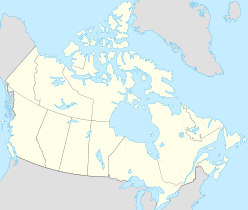Saint Martin crater facts for kids
| Impact crater/structure | |
|---|---|
| Confidence | Confirmed |
| Diameter | 40 km (25 mi) |
| Age | 227.8 ± 1.1 Ma Carnian |
| Exposed | No |
| Drilled | Yes |
| Location | |
| Coordinates | 51°47′N 98°32′W / 51.783°N 98.533°W |
| Country | Canada |
| Province | Manitoba |
| Municipality | Grahamdale |
The Saint Martin crater is a huge hole in the ground in Manitoba, Canada. It was made a very long time ago when a space rock, like an asteroid, crashed into Earth. You can find it in the northern part of the Rural Municipality of Grahamdale, near Lake St. Martin.
This crater is about 40 kilometers (25 miles) wide. Scientists have figured out that it is about 227.8 million years old. This was during a time called the Triassic period. Even though it's very old, the crater is still in good shape. However, it's hard to see from the surface because a lot of dirt and rocks left behind by glaciers cover the area.
What if many craters formed at once?
Some scientists think that the Saint Martin crater might be part of a bigger event. They believe it could have formed at the same time as several other craters around the world. This idea is called a "multiple impact event."
Three scientists, David Rowley, John Spray, and Simon Kelley, suggested this idea. They looked at the Saint Martin crater and four other craters:
- The Manicouagan crater in northern Quebec, Canada.
- The Rochechouart crater in France.
- The Obolon' crater in Ukraine.
- The Red Wing crater in North Dakota, USA.
These craters were already known. But these scientists noticed something new: they seemed to line up in a special way when they looked at how the Earth was positioned millions of years ago. This lining up is called "paleoalignment."
David Rowley said that it's almost impossible for these craters to line up like this just by chance. This suggests that they might have all been created around the same time by pieces of a larger comet or asteroid that broke apart before hitting Earth.


